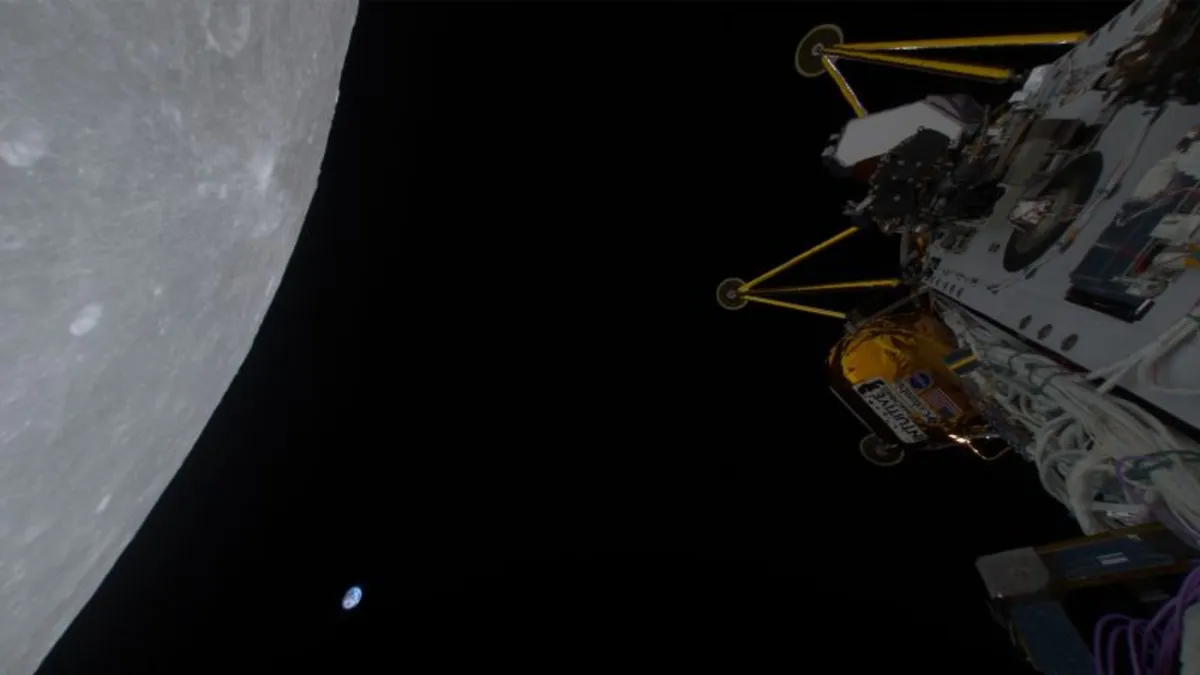
In a significant development marking the resurgence of lunar exploration, Athena is not the only spacecraft on a mission to land on the moon. In the early hours of Sunday morning, a spacecraft developed by Texas-based Firefly Aerospace, located in Cedar Park, successfully touched down on the lunar surface. This historic landing adds another dimension to the ongoing lunar race, which also features a third vehicle, Resilience, a commercial moon lander created by Japan-based Ispace.
Ispace aims to redeem itself after a failed landing attempt in 2023, embodying its motto: “Never Quit the Lunar Quest.” Resilience is currently en route to the moon, having launched on the same rocket as Firefly’s Blue Ghost. However, it is taking a more leisurely trajectory and is expected to land in June. Ispace is targeting a landing in the expansive Mare Frigoris, or "Sea of Cold," located in the moon’s far northern region.
Meanwhile, Athena is en route to the moon's south pole region. Firefly’s Blue Ghost is set to land within Mare Crisium, or "Sea of Crises" in Latin, a large lunar basin near the moon’s equator. Since launching from Florida aboard a SpaceX Falcon 9 rocket on February 26, Athena has been making loops around the moon. The spacecraft executed its main engine burn on Monday, transitioning into lunar orbit and is scheduled to complete around 37 laps before landing.
This extended stay in lunar orbit has allowed Athena to capture breathtaking images of the moon's surface, which Intuitive Machines, the company behind Athena, has shared on its social media platforms and website.
The Athena lander stands at 15.3 feet (4.73 meters) tall, comparable in size to a standard giraffe or a double-decker bus. If measured under Earth’s gravity, its weight is nearly 4,700 pounds (2,120 kilograms). The vehicle resembles the size of a golf cart but is equipped with numerous scientific instruments and technology demonstrations. Athena is part of the Nova-C lander series developed by Intuitive Machines since the company was selected for NASA’s robotic moon lander program in 2018.
Athena's primary mission objective is to search for water on the lunar surface. Scientists believe that the moon’s south pole may contain vast reserves of water ice, hidden in permanently shadowed craters or just beneath the surface. During its 10-day operational window, Athena is anticipated to hunt for water in both of these locations.
The lander is equipped with a hopper designed to leap from the vehicle and dive into nearby craters, as well as a drill capable of reaching depths of up to 3 feet (1 meter) below the lunar surface. Each tool is outfitted with instruments to analyze the moon’s soil, searching for definitive evidence of water presence. According to Siegfried Eggl, an assistant professor of aerospace engineering at the University of Illinois at Urbana-Champaign, confirming the existence of water would be groundbreaking. “We’re 99.9% sure it's there — we just don’t know which form it is,” he stated.
Eggl emphasized that tangible exploration is essential for understanding the moon's resources. “If NASA’s PRIME-1 drill can locate water ice just below the moon’s surface, it would be extremely exciting,” he added. He further noted that finding water-rich material near the surface would allow for quicker extraction across the lunar south pole.
The Athena lander is on a fast-paced journey to the moon, gearing up for its final descent. Below are key milestones that the spacecraft is set to achieve:
Descent Orbit Insertion: This morning, Athena completed a maneuver to reduce speed and decrease altitude. Terrain Relative Navigation: Half an hour before landing, Athena will activate its navigation systems to map the lunar terrain and avoid hazards. Powered Descent Initiation: Approximately 15 minutes prior to touchdown, Athena will reignite its engine to begin a gradual descent. Pitch Over: Less than five minutes before landing, Athena will transition to an upright position. Hazard Detection and Avoidance: A few minutes before landing, the onboard navigation systems will scout for a safe landing area. Terminal Descent: At two minutes before landing, Athena will rely solely on inertial measurements for its final approach. Landing: The final moment of touchdown is anticipated at approximately 12:30 p.m. ET at Mons Mouton, a plateau near the lunar south pole.The ongoing lunar missions, including Athena's groundbreaking efforts, signify a new era in space exploration as companies and nations alike race to uncover the mysteries of the moon.